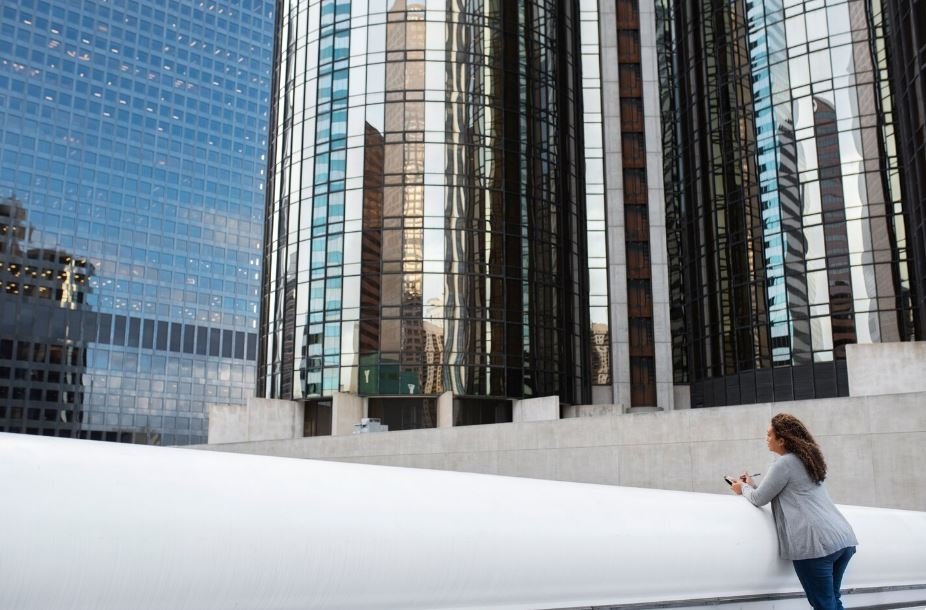
The Architecture of Billionaires: Where Money Meets Minimalism frequently shows up as a remarkably successful reaction to overstimulation, exposing a remarkably similar pattern among wealthy homeowners who purposefully leave their spaces bare while concealing incredible sophistication underneath. Recent discussions with architects have brought to light the increasing relationship between status and silence, demonstrating how the wealthiest clients favor clean spaces as a powerful means of self-definition. Despite being designed through incredibly intricate processes, their homes, which are characterized by restrained color schemes and structural clarity, provide spaces that feel remarkably clear, almost meditative.
Since early tech leaders showed how minimalism could represent a life optimized for focus, this trend has significantly improved in execution and ambition over the last ten years. Steve Jobs famously adopted emptiness as a design principle, reinforcing disciplined thinking with sparse spaces. His surroundings, which are frequently characterized as being extraordinarily adaptable, served as an inspiration to a generation of founders who thought that removing physical noise could improve mental capacity. These people created homes that serve as helpful companions, subtly promoting clarity, by utilizing advanced analytics in their work and applying a similar logic to their spaces.
| Key Area | Information |
|---|---|
| Theme | The Architecture of Billionaires: Where Money Meets Minimalism |
| Core Design Traits | Expansive voids, seamless lines, hidden storage, contemplative lighting |
| Influential Figures | Mark Zuckerberg, Steve Jobs, Warren Buffett, Elon Musk, Oprah Winfrey |
| Architectural Signatures | Floating geometries, retractable glass planes, matte surfaces, acoustic walls |
| Cultural Influence | Quiet luxury aesthetics, identity-driven spaces, anti-flash wealth culture |
| Social Impact | Shift in status symbols, rising preference for calm environments |
| Trend Forces | Tech-driven restraint, privacy concerns, optimization culture |
| Critiques | Performance minimalism, covert consumption, curated austerity |
| Global Presence | LA, Dubai, Singapore, London, San Francisco |
| Reference Link | https://www.missminimalist.com |
Remote routines during the pandemic revealed how emotionally taxing cluttered spaces could be, and affluent homeowners started asking for designs that were lighter, brighter, and had a lot less visual noise. This change prompted architects to employ floating features that function almost like architectural choreography, whisper-quiet storage, and expansive planes of soft stone. According to one designer, a client demanded a living room where everything could vanish into concealed panels. This decision felt especially creative since it made everyday life seem effortlessly controlled.
Retractable glass walls calibrated by smart systems that react to light, temperature, and privacy requirements are incorporated into many of these homes by working with specialized engineers. This combination of technology and simplicity streamlines operations and frees up human talent from previously manual tasks, much like a swarm of bees coordinating with remarkable precision. In a poetic metaphor that encapsulated the nuanced power of minimalist design, a billionaire in Los Angeles compared the experience to living inside a highly effective instrument that was tuned to his emotional rhythm.
Minimalist billionaire architecture conveys a strong message that success doesn’t have to shout when it comes to personal branding. The idea that having fewer options can result in a noticeably better sense of control is further supported by Mark Zuckerberg’s preference for subdued environments, which reflects a carefully curated identity that complements his renownedly repetitive wardrobe. Contrarily, Warren Buffett still resides in the house he bought decades ago, showing how temperament, not style, can lead to minimalism. His intentional restraint-shaped lifestyle reflects the idea that function is more important than show.
Since “quiet luxury” aesthetics gained popularity, the public’s interest in billionaire homes has increased dramatically. Even though the materials are frequently more expensive than traditional luxury finishes, social media tours show homes with unbroken stone floors and unadorned ceilings that evoke a sense of calm that is surprisingly easy to replicate. Unaware of the subtle engineering underlying each seamless transition, viewers frequently remark on the calming effect of such settings.
Many affluent homeowners use lighting as the main decorative element thanks to strategic partnerships with lighting experts. Without the need for objects, gentle washes of indirect lighting produce movement on matte surfaces. Light, according to one architect, is the emotional language of the house and is especially helpful in rooms intended for people who need psychological stability in the face of hectic schedules. These lighting techniques are incredibly effective at creating a calming atmosphere that furniture could never match.
Creating minimalist designs for billionaires has turned into a test of skill for medium-sized architectural firms. Even seemingly straightforward tasks require incredibly robust materials, exact calibration, and careful planning. In response to a Singaporean client’s request for a kitchen devoid of any visible appliances, the design team incorporated cooktops, ventilation, and refrigeration into sculptural surfaces. Three engineering teams were needed to install the system, but the finished product appeared flawless, illustrating how minimalism frequently conceals a significant amount of work underneath it.
The desire for subtle design is still evident in celebrity home interviews. Oprah Winfrey frequently highlights the value of deliberate space by demonstrating how tastefully placed, meaningful objects can evoke strong feelings. Known for making unorthodox choices, Elon Musk once lived in a tiny, prefabricated apartment while he worked nonstop on engineering projects. This decision, which is frequently praised for being surprisingly economical for someone of his size, prioritized utility over extravagance and fueled discussions about what exactly luxury is.
In terms of public opinion, minimalist billionaire architecture frequently provokes discussion. Creators of TikTok debate whether this kind of restraint serves as camouflage, making wealth seem approachable while still being accentuated by unique engineering and rare materials. Critics contend that when comfort is already assured, minimalism turns into a platform for privileged asceticism, a display of simplicity. However, proponents argue that this design philosophy encourages society to value calm over accumulation and provides a healthier alternative to visual excess.
Parallels between elite minimalism and grassroots simplicity have been made since the rise of extreme minimalism stories, in which people live with less than 100 items. But the reasons are different. While billionaire minimalism frequently focuses on regulating sensory input and safeguarding mental capacity, everyday minimalists reduce belongings to recover time or financial stability. Although both strategies have a clear aspiration, their underlying resources show different places to start.
Some billionaire homes can instantly adjust to changing needs without the need for human intervention by combining blockchain technology with automated environmental systems. Storage zones change electronically to accommodate changing routines, security calibrates itself without visible hardware, and climate control adapts using predictive modeling. These characteristics produce environments that react much more quickly, acting almost like living things that are always changing.
According to architects, billionaire minimalism will move toward hyper-natural settings in the upcoming years, combining earth-inspired hues, tactile wood, and raw stone in a way that feels incredibly grounded and clear. This subsequent stage reflects a desire to combine technological intelligence with stillness, creating environments that feel both futuristic and ancient, urging people to take a moment to slow down, take a deep breath, and appreciate what’s left after everything superfluous has been removed.
